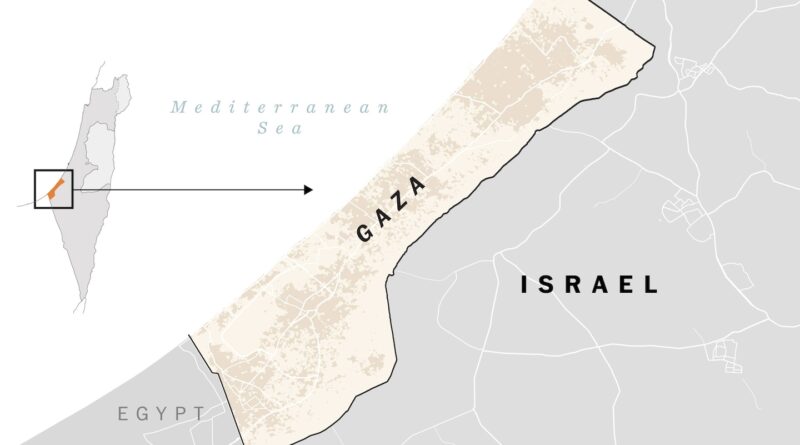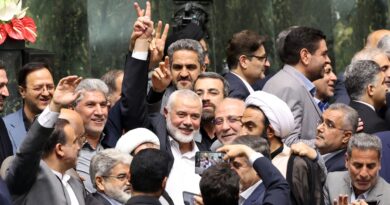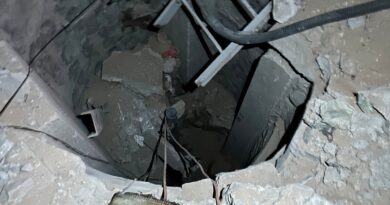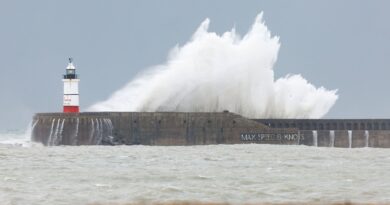How the Israel-Gaza conflict is unfolding in maps, graphics and videos
Damaged areas
since Oct. 12
Population by municipality
Sources: Palestinian Central Bureau of Statistics,
U.N. Office for the Coordination of Humanitarian Affairs
(OCHA), damage analysis of Copernicus Sentinel-1
satellite data by Corey Scher of CUNY Graduate Center
and Jamon Van Den Hoek of Oregon State University

Damaged areas
since Oct. 12
Population by municipality
Sources: Palestinian Central Bureau of Statistics, U.N. Office for the
Coordination of Humanitarian Affairs (OCHA), damage analysis of
Copernicus Sentinel-1 satellite data by Corey Scher of CUNY
Graduate Center and Jamon Van Den Hoek of Oregon State University

Damaged areas
since Oct. 12
Population by municipality
Sources: Palestinian Central Bureau of Statistics, U.N. Office for the Coordination of Humanitarian Affairs (OCHA), damage analysis of Copernicus Sentinel-1
satellite data by Corey Scher of CUNY Graduate Center and Jamon Van Den Hoek of Oregon State University

Damaged areas
since Oct. 12
Population by municipality
Sources: Palestinian Central Bureau of Statistics, U.N. Office for the Coordination of Humanitarian
Affairs (OCHA), damage analysis of Copernicus Sentinel-1 satellite data by
Corey Scher of CUNY Graduate Center and Jamon Van Den Hoek of Oregon State University
Satellite images captured by Planet Labs on Oct. 16 showed how military vehicles have gathered in recent days in the Ashkelon subdistrict of Israel, north of Gaza. Israeli Defense Minister Yoav Gallant told troops on Thursday that they would soon see Gaza “from inside,” suggesting an expected ground invasion could be nearing.

Satellite images show how military vehicles have gathered in recent days in the Ashkelon subdistrict of Israel, north of Gaza.

Satellite images show how military vehicles have gathered in recent days in the Ashkelon subdistrict of Israel, north of Gaza.
The conflict has brought fear, destruction and uncertainty for millions in the region. Here’s how the events have been unfolding.
Israeli tanks conduct ‘targeted’ raid
The Israeli military said it sent tanks in to conduct a “targeted raid” in the northern Gaza Strip overnight, describing the brief raid as “part of preparations for the next stages of combat.”
Day 19 Wednesday, Oct. 25
Gaza deaths mount as Israel intensifies strikes
Israel continued to strike the Gaza Strip, targeting Hamas infrastructure, according to the Israel Defense Forces (IDF). In northern Israel, Israeli fighter jets attacked military infrastructure and positions of the Syrian army in response to fire toward Israel, and border fire continued between IDF and Hezbollah in the Israel-Lebanon border.
Gaza deaths mount as Israel intensifies strikes
Palestinian authorities said Israeli strikes have killed at least 5,791 people in Gaza and wounded more than 16,297. Israeli authorities said more than 1,400 people have been killed in Israel and more than 5,400 injured since the Hamas attack on Oct. 7
IDF claims hundreds of strikes in Gaza as U.S. braces for regional escalation
The Israel Defense Forces said it attacked more than 320 targets in the Gaza Strip in the past day. As tensions rise in the Middle East, Secretary of State Antony Blinken warned of a “likelihood” of “escalation by Iranian proxies” against U.S. forces and said that the United States is “taking steps to make sure that we can effectively defend our people.”
Israel intensifies bombing on multiple fronts
Israeli warplanes hit targets across the Gaza Strip as well as two airports in Syria and a mosque in the occupied West Bank allegedly used by militants, while a second convoy of humanitarian aid reportedly began crossing into Gaza from Egypt on Sunday afternoon.
First aid convoy enters Gaza from Egypt
Aid trucks arrived in Gaza on Saturday for the first time since the start of the war, entering through Egypt’s Rafah border crossing as world leaders gathered in Cairo and Israel said it was increasing its attacks on Hamas.
Israel levels Gaza district as invasion looms
An Israeli strike damaged Gaza’s historic Church of St. Porphyrius on Friday. The church was sheltering hundreds of Palestinians displaced by the war. In the northern border, Israel’s Defense Ministry announced the evacuation of a town that has an estimated population of about 20,000.
President Biden announces Gaza aid deal
Israel pounded Gaza with more airstrikes on Thursday, as President Biden said Egypt would allow up to 20 trucks with aid through the Rafah border crossing.
Day 12 Wednesday, Oct. 18
U.S. says Israel ‘not responsible’ for hospital blast
In a statement Wednesday, White House spokeswoman Adrienne Watson said the current U.S. assessment, based on “overhead imagery, intercepts and open source information,” found that Israel was “not responsible” for the blast at the al-Ahli Hospital in Gaza.
Clashes across West Bank left several Palestinians dead. Protests erupted also outside the U.S. Embassy in Beirut and in Amman, Jordan.
Palestinian, Israeli leaders trade blame for hospital attack
An attack on the al-Ahli Hospital in central Gaza City has killed hundreds of people, according to the Palestinian Health Ministry. Palestinian officials say an Israeli airstrike hit the hospital courtyard where displaced Gazans were taking shelter; the Israel Defense Forces blamed the Palestinian Islamic Jihad militant group, saying “a barrage of rockets” was passing near the hospital when it was hit.
100,000 still remain in Gaza City and the north
The U.N. agency for Palestinian refugees estimates that 1 million people have been displaced across the Gaza Strip. Approximately 100,000 still remain in Gaza City and the north despite Israel’s evacuation directive.
Evacuations in southern Lebanon
The Israeli Defense Ministry on Monday released a list of 28 communities along the northern border of Lebanon to begin evacuating to state-funded accommodations. The communities are mostly within 1.2 miles of the Lebanese border.
Israel has long been enemies with Lebanon-based militant group Hezbollah and the two sides have intermittently shelled each other. Skirmishes between the two have been routine for decades, but tensions have been high since the Israel-Gaza war that began Oct. 7. The Israel Defense Forces said earlier Monday that it had struck Hezbollah military infrastructure in Lebanon overnight in retaliation for an attack on Israeli territory Sunday.
Troops spotted near the border
As a ground invasion looms, Israeli troops and armored vehicles were seen in multiple locations near the northern and eastern borders with Gaza on Saturday and Sunday.
Several vehicles amassed in the southern Israeli city of Ashkelon. Tanks were also spotted in Nahal Oz, an Israeli town near Gaza City.
Gaza residents flee south
The main roads running north to south were crowded for a second day Saturday after the Israeli military called for civilians to move south of the Wadi Gaza wetlands through designated streets. Many fled on foot.
But some civilians refused to leave northern Gaza, fearing that escape routes are too dangerous. Hamas’s media office said airstrikes hit cars as they headed south from Gaza City, killing 70 people.
Israel calls for evacuations
Israel told the 1.1 million people living in northern Gaza to move south within 24 hours, a warning the United Nations called impossible “without devastating humanitarian consequences.” Included in the directive was Gaza City, the strip’s most densely populated area.
The call came as Israel continued to pummel the strip with bombs and the death toll surged past 1,500. The United Nations said an estimated 600,000 people are displaced to the southern half of Gaza, though this number is likely an undercount.
With exits to Israel and Egypt closed, Gazans have nowhere to go. A mass evacuation “could transform what is already a tragedy into a calamitous situation,” the United Nations said.
Preparing for a ground assault
Israeli tanks deployed to the border with Gaza, and reservists arrived for duty at the Julis military base near Ashkelon.
Meanwhile, the Israeli bombardment of Gaza continued.
Rear Adm. Daniel Hagari, a spokesman for the IDF, said in a televised briefing that Israel would no longer allow Hamas to exist next door.
“Unlike other operations, we are collapsing the governance and sovereignty of the Hamas organization,” he said.
Deep underground, in the northern Israeli city of Haifa, medics lined up hospital beds and braced for the possibility of a wider regional escalation. After rocket fire from Syria earlier in the week, Israel launched missile strikes on two of the nation’s main airports, authorities in Damascus said.
Israeli strikes on Gaza intensified, many concentrated in heavily populated areas in the north. The death toll surpassed 1,100 people, and more than 263,000 people were displaced across the strip. The United Nations announced 11 workers were killed.

Explosions or airstrikes in northern Gaza
Explosion near
Mashroo Amer
wal Isra’a
Note: Not all events are included due to data availability.
Sources: U.N. Office for the Coordination of Humanitarian
Affairs (OCHA), Israel Defense Forces, Maxar Technologies,
Google Earth

Explosions or airstrikes in northern Gaza
Explosion near
Mashroo Amer
wal Isra’a
Destroyed
al Gharbi mosque
Note: Not all events are included due to data availability.
Sources: U.N. Office for the Coordination of Humanitarian
Affairs (OCHA), Israel Defense Forces, Maxar Technologies, Google Earth

Explosions or airstrikes in northern Gaza
Explosion near
Mashroo Amer wal Isra’a.
Destroyed
al-Gharbi mosque
Airstrikes destroyed several
mosques in west Gaza.
Bombing significantly damaged
hospitals in Gaza City.
Destroyed residential
buildings near As Sabra.
International Eye Hospital
Note: Not all events are included due to data availability.
Sources: U.N. Office for the Coordination of Humanitarian Affairs (OCHA), Israel Defense Forces,
Maxar Technologies, Google Earth

Explosions or airstrikes in northern Gaza
Explosion near
Mashroo Amer
wal Isra’a
Airstrikes destroyed several
mosques in west Gaza.
Bombing significantly damaged
hospitals in Gaza City.
Islamic
University
of Gaza
International Eye Hospital
Palestinian authorities said Gaza’s only power plant had run out of fuel and was no longer operating.
Israel provides Gaza with power in two ways. Gaza’s power plant runs on imported diesel fuel. There are also 10 direct power lines from Israel to Gaza. Now, both sources were cut off.

Where Gaza gets its electricity
The Gaza Strip has a total daily power supply of 195 MWs.
Israel supplies 120 megawatts daily to Gaza, which are delivered through direct power lines.
Gaza’s power plant supplies 65 to 75 daily megawatts. The fuel that powers this plant is purchased from Israel and enters Gaza through the Karem Shalom crossing.
FROM GAZA’S
POWER PLANT

Where Gaza gets its electricity
The Gaza Strip has a total daily power supply of 195 MWs.
Israel supplies 120 megawatts daily to Gaza, which are delivered through direct power lines.
Gaza’s power plant supplies 65 to 75 daily megawatts. The fuel that powers this plant is purchased from Israel and enters Gaza through the Karem Shalom crossing.

Where Gaza gets its electricity
The Gaza Strip has a total daily power supply of 195 MWs.
Israel supplies 120 megawatts daily to Gaza, which are delivered through direct power lines.
Gaza’s power plant supplies 65 to 75 daily megawatts. The fuel that powers this plant is purchased from Israel and enters Gaza through the Karem Shalom crossing.

Where Gaza gets its electricity
Israel supplies 120 megawatts daily to Gaza, which are delivered through direct power lines.
Gaza’s power plant supplies 65 to 75 daily megawatts. The fuel that powers this plant is purchased from Israel and enters Gaza through the Karem Shalom crossing.
Total daily power
supply: 195 MWs
Scenes of more destruction
Bodies in Israel were still being found. After 2½ days of intense fighting in Kfar Azza — one of the first towns attacked — soldiers escorted journalists through scenes of utter ruin. Homes were burned, cars were smashed, and the air smelled of death.
Israeli commanders said they had gained control of the border around Gaza, but Hamas continued to fire rockets into Israel, even as IDF airstrikes targeted militant infrastructure and command posts. The military said it had carried out more than 2,000 strikes across Gaza since Saturday, killing hundreds of Palestinians.
Israel pledged to focus its fire on Hamas fighters and abide by international law. Two members of Hamas’s political office were killed.

Explosion in northern Gaza
al-Gharbi mosque in northern Gaza
al-Sousi mosque near Rimal
Residential buildings near As Sabra
Source: Maxar Technologies

Explosion in northern Gaza
al-Gharbi mosque in northern Gaza
al-Sousi mosque near Rimal
Residential buildings near As Sabra
Source: Maxar Technologies

al-Gharbi mosque
in northern Gaza
Explosion in northern Gaza
Residential buildings
near As Sabra
al-Sousi mosque near Rimal
Source: Maxar Technologies
But mosques, hospitals, residential buildings and international aid groups were also hit.
A ‘complete siege’ of Gaza
Israeli Defense Minister Yoav Gallant ordered a “complete siege” of Gaza, saying Israel would cut off supplies of power, food and gas.
Gazans have lived for 16 years under an Israeli blockade supported by Egypt and are heavily dependent on Israel for electricity and other basic services. Cutting off gas and power could leave many residents not only without electricity, but also without clean drinking water, proper sanitation and health care.
U.N. human rights chief Volker Turk would a day later condemn the siege, saying that depriving civilians of “goods essential for their survival is prohibited under international humanitarian law.”

The two main sources of electricity in Gaza are Israel’s electricity company, which supplies power through 10 lines, and the Gaza power plant, which frequently runs at partial capacity because of its reliance on inefficient diesel fuel. Gaza has not been able to obtain electricity
from Egypt for several years.
Wastewater treatment plant
Wastewater pumping station
Electricity feed from Israel
Electricity feed from Israel

The two main sources of electricity in Gaza are Israel’s electricity company, which supplies power through 10 lines, and the Gaza power plant, which frequently runs at partial capacity because of its reliance on inefficient diesel fuel. Gaza has not been able to obtain electricity from Egypt for several years.
Electricity feed
from Israel
Wastewater
treatment plant
Wastewater
pumping station
Electricity feed
from Israel
Electricity feed
from Israel

The two main sources of electricity in Gaza are Israel’s electricity company, which supplies power through 10 lines, and the Gaza power plant, which frequently runs at partial capacity because of its reliance on inefficient diesel fuel. Gaza has not been able to obtain electricity from Egypt for several years.
Electricity feed
from Israel
Wastewater
treatment
plant
Wastewater
pumping
station
Electricity feed
from Israel
Electricity feed
from Israel

The two main sources of electricity in Gaza are Israel’s electricity company, which supplies power through 10 lines, and the Gaza power plant, which frequently runs at partial capacity because of its reliance on inefficient diesel fuel. Gaza has not been able to obtain electricity from Egypt for several years.
Wastewater
treatment plant
Wastewater
pumping station
Electricity feed from Israel
Electricity feed from Israel
As airstrikes on Gaza continued, fleeing Palestinians saw their last hope erased. Strikes near the Rafah crossing with Egypt, the last route out of the territory, closed the checkpoint indefinitely, leaving civilians with nowhere to go.
Fighting continues, death toll rises
Fighting continued with militant holdouts inside Israel as the country formally declared war on Hamas. Hezbollah, the Lebanese militant group that is allied with Hamas, fired dozens of rockets into northern Israel.
The Israel Defense Forces launched a punishing campaign of airstrikes on Gaza, displacing thousands of people in the first 24 hours.
In Israel, the death toll continued to rise. More than 250 bodies were recovered at the site of a trance music festival held just three miles away from the Gaza border. Survivors described tired festivalgoers running for their lives in a wide-open field as militants gunned them down.
Early Saturday morning, under the cover of thousands of rockets, Hamas militants breached Israel’s high-tech “smart wall” and went on a killing rampage in small towns across southern Israel.

Cameras, radar and sensors
Underground
concrete barrier
Underground
sensors to detect
militant tunnels

Cameras, radar and sensors
Underground
concrete barrier
Underground
sensors to detect
militant tunnels

Cameras, radar and sensors
Underground sensors
to detect militant
tunnels
Underground
concrete barrier

Cameras, radar and sensors
Underground sensors
to detect militant
tunnels
Underground
concrete barrier
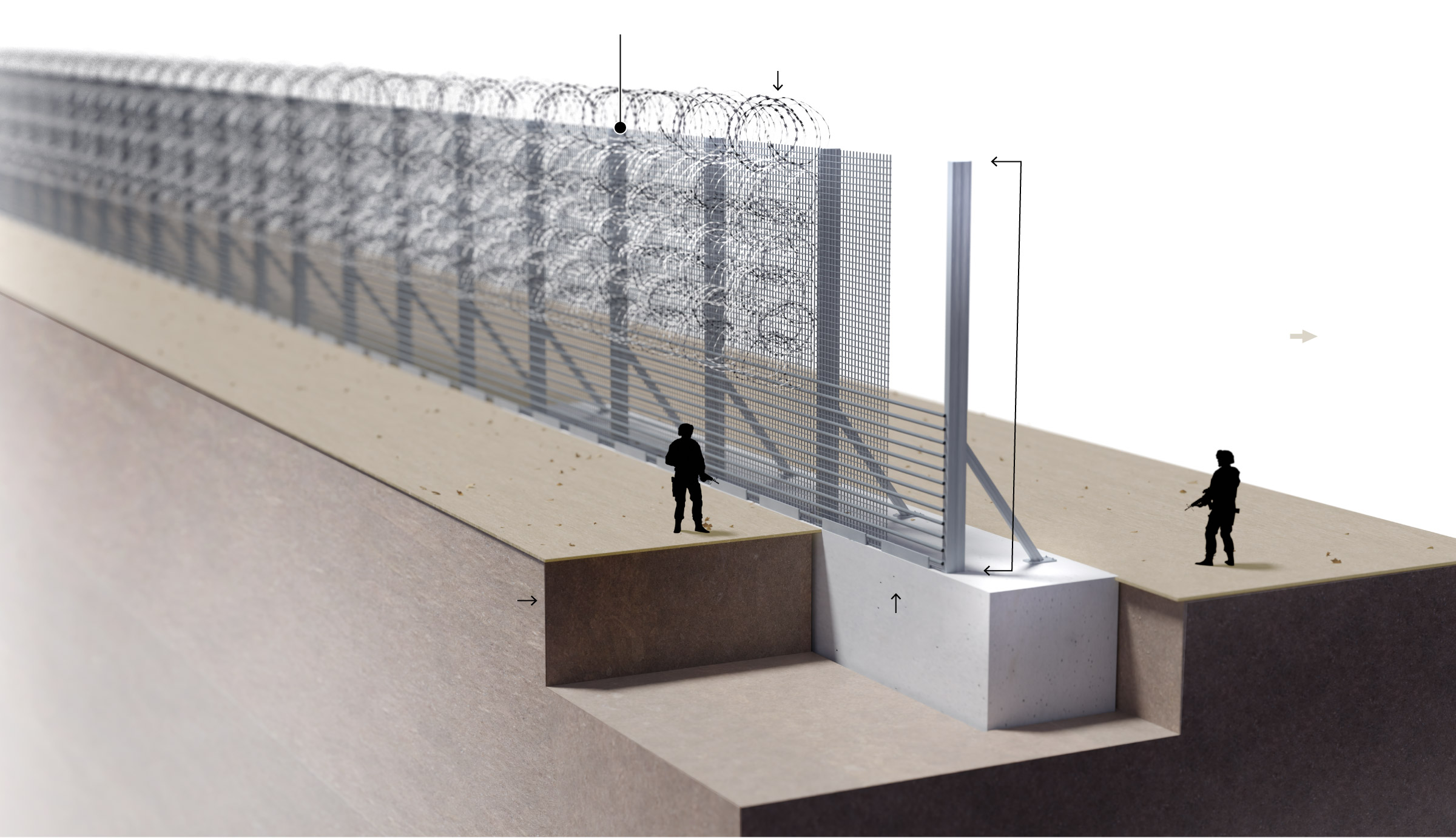
Cameras, radar and sensors
Underground sensors
to detect militant
tunnels
Underground
concrete barrier

Israel’s perimeter fence
and access-restricted area
Sand barriers to
slow intruders
300–100 M
Access permitted
only to farmers
on foot
The new border fence
has an underground
concrete barrier to an
undisclosed depth.

Israel’s perimeter fence
and access-restricted area
Sand barriers to
slow intruders
100–300 M
Access
permitted
only to farmers
on foot
The new border fence
has an underground
concrete barrier to an
undisclosed depth.

Israel’s perimeter fence
and access-restricted area
100–300 M
Access permitted
only to farmers
on foot
Sand barriers to
slow intruders
The new border fence
has an underground
concrete barrier to an
undisclosed depth.

Israel’s perimeter fence
and access-restricted area
100–300 M
Access permitted
only to farmers
on foot
Sand barriers to
slow intruders
The new border fence
has an underground
concrete barrier to an
undisclosed depth.
The ambush took Israeli forces by surprise. Officials said the attackers overran more than 20 communities. It took the military 10 hours to arrive in some towns. By that point, hundreds of civilians were already dead. Militants are believed to have taken more than 100 hostages into Gaza.

